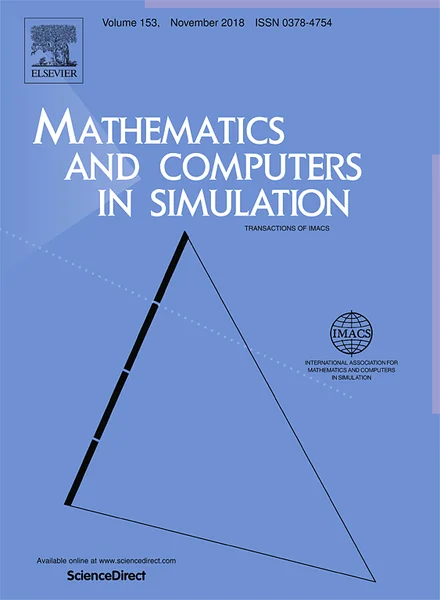-
an assessment of modelling capacity to identify the impacts of climate variability on catchment hydrology
جزئیات بیشتر مقاله- تاریخ ارائه: 1397/02/20
- تاریخ انتشار در تی پی بین: 1397/02/20
- تعداد بازدید: 253
- تعداد پرسش و پاسخ ها: 0
- شماره تماس دبیرخانه رویداد: -
the aim is to investigate the consistency or variability of catchment response over time and space and evaluate the predictive error caused by the impacts of climate variability on streamflow. for this purpose, both data- and top-down model-based analyses of the dynamic relation between rainfall and runoff for selected sub-catchments have been undertaken. data analysis techniques (e.g. trend analysis, deconvolution and baseflow filtering) were used to assess the temporal and spatial variation in the hydrologic response characteristics for each site. the lumped conceptual rainfall–runoff model ihacres cmd (catchment moisture deficit) version is applied to the sub-catchments to assess the adequacy of the model response in representing the impact of weather patterns on streamflow. several performance criteria have been used to evaluate the performance of the model in each calibration period using a multi-criteria approach. the ihacres-3s (3 storage) model is applied to assess low flow behaviour and capture the timing in the switch between baseflow and no flow periods. rainfall–runoff model performance characteristics of each sub-catchment are quite related to their incident rainfall regime. sub-catchments which are located in a lower rainfall regime show poor to average model performance. the reduction in performance in r2 is due to the poor fitting to the peaks for both large and small streamflow events, with the model underestimating the highest flow peaks, and overestimating smaller peaks. further work will be needed to assess observed data reliability and improve model performance in order to separate the impacts of climate variations and land use change on hydrological response. an appropriate model structure having a variable partitioning between quick and slow flow components is under consideration and techniques are being used to identify problematic periods and events with high error in the observational data.
مقالات جدیدترین رویدادها
-
استفاده از تحلیل اهمیت-عملکرد در ارائه الگوی مدیریت خلاقیت سازمانی و ارائه راهکار جهت بهبود
-
بررسی تاثیر ارزش وجوه نقد مازاد بر ساختار سرمایه شرکت های پذیرفته شده در بورس اوراق بهادار تهران
-
بررسی تأثیر سطح افشای ریسک بر قرارداد بدهی شرکت های پذیرفته شده در بورس اوراق بهادار تهران
-
بررسی تأثیر رتبه بندی اعتباری مبتنی بر مدل امتیاز بازار نوظهور بر نقد شوندگی سهام با تأکید بر خصوصی سازی شرکت ها
-
تأثیر آمیخته بازاریابی پوشاک ایرانی بر تصویر ذهنی مشتری پوشاک ایرانی (هاکوپیان)
-
بررسی روش های عددی ضریب زبری در سازه های هیدرولیکی
-
ارزیابی اثرات توسعه شهری بر منابع زیست محیطی (مطالعه موردی: شهرستان شهریار)
-
پیشگیری از روسپی گری
-
رابطه طرحواره های عشق، تجربه شکست عاطفی و خودکنترلی با توجیه روابط فرازناشویی دانشجویان مرد متاهل
-
بررسی آلودگی، مقدار و نحوه توزیع عناصر سنگین در خاک، متاثر از شیرابه های دفن زباله، توسط روش ها، آزمون ها و تحلیل های آماری در دو هزار شهرستان تنکابن (مازندران)
مقالات جدیدترین ژورنال ها
-
مدیریت و بررسی افسردگی دانش آموزان دختر مقطع متوسطه دوم در دروان کرونا در شهرستان دزفول
-
مدیریت و بررسی خرد سیاسی در اندیشه ی فردوسی در ادب ایران
-
واکاوی و مدیریت توصیفی قلمدان(جاکلیدی)ضریح در موزه آستان قدس رضوی
-
بررسی تاثیر خلاقیت، دانش و انگیزه کارکنان بر پیشنهادات نوآورانه کارکنان ( مورد مطالعه: هتل های 3 و 4 ستاره استان کرمان)
-
بررسی تاثیر کیفیت سیستم های اطلاعاتی بر تصمیم گیری موفق در شرکتهای تولیدی استان اصفهان (مورد مطالعه: مدیران شرکتهای تولیدی استان اصفهان)
-
مقایسۀ خلاقیت، هوش هیجانی و عملکرد تحصیلی دانش آموزان یک زبانه و دوزبانه پسر پایه ششم ابتدایی شهرستان رامهرمز
-
بررسی تاثیر انعطاف پذیری کارکنان برفرسودگی شغلی با میانجیگری توانمندسازی روانی (مطالعه موردی: کارکنان شهرداری شهر اراک)
-
بررسی تطبیقی اساطیرآفرینش و پایان جهان در ایران و اسکاندیناوی
-
ارائه فرایند طراحی شهری راهبردی به منظور بازآفرینی گذرهای تاریخی
-
development of 3-d finite element models for geo-jute reinforced flexible pavement




سوال خود را در مورد این مقاله مطرح نمایید :